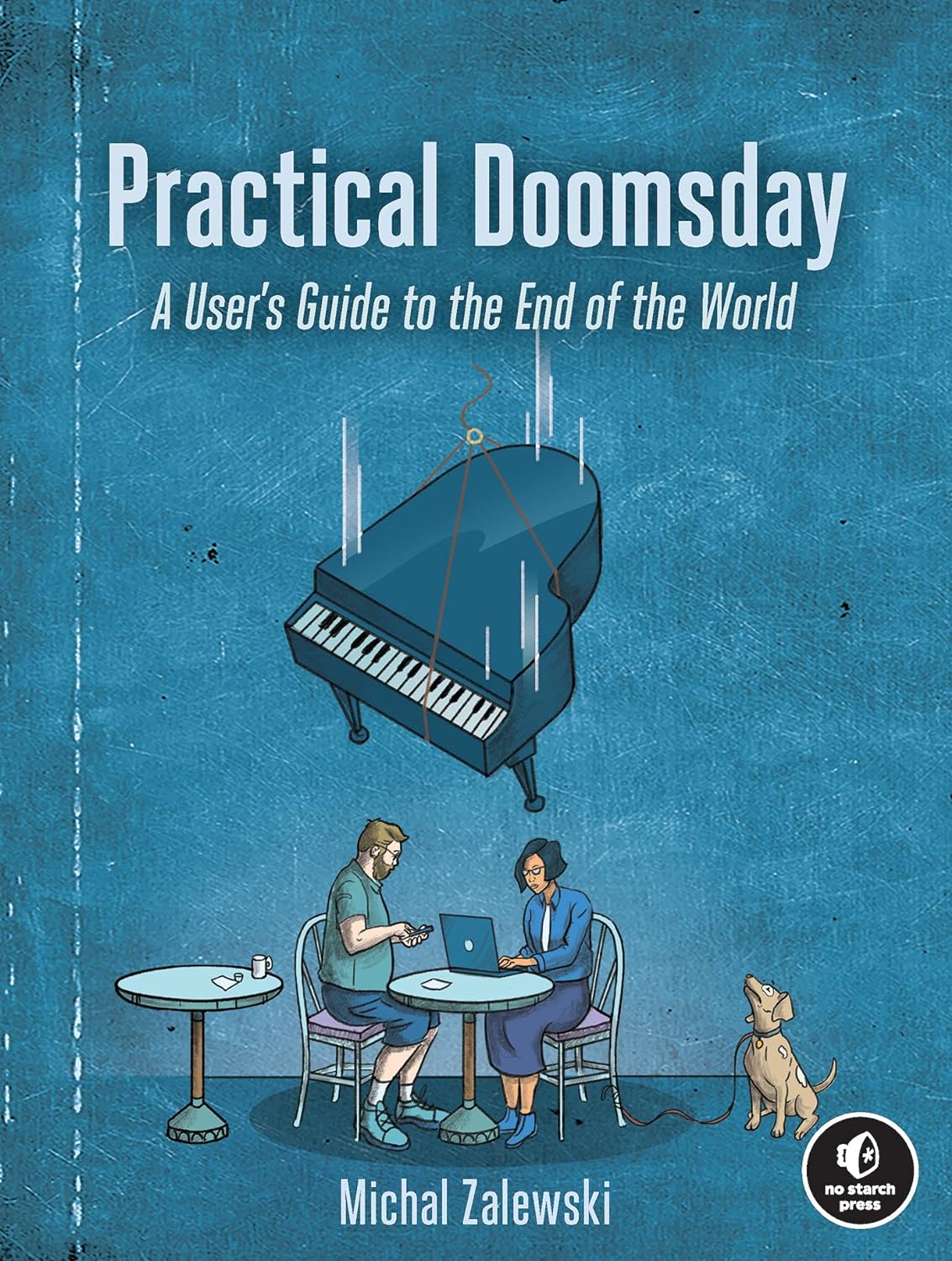Paperback, 250 pages
English language
Published Jan. 28, 2022 by No Starch Press, Incorporated.

Paperback, 250 pages
English language
Published Jan. 28, 2022 by No Starch Press, Incorporated.
As a leading security engineer, Michal Zalewski has spent his career methodically anticipating and planning for cyberattacks. In Practical Doomsday, Zalewski applies the same thoughtful, rational approach to preparing for disasters of all kinds. By sharing his research, advice, and a healthy dose of common sense, he’ll help you rest easy knowing you have a plan for the worst—even if the worst never comes.
The book outlines a level-headed model for evaluating risks, one that weighs the probability of scenarios against the cost of preparing for them. You’ll learn to apply that model to the whole spectrum of potential crises, from personal hardships like job loss or a kitchen fire, to large-scale natural disasters and industrial accidents, to recurring pop-culture fears like all-out nuclear war. You’ll then explore how basic lifestyle adjustments, such as maintaining a robust rainy-day fund, protecting yourself online, and fostering good relationships with your neighbors, can …
As a leading security engineer, Michal Zalewski has spent his career methodically anticipating and planning for cyberattacks. In Practical Doomsday, Zalewski applies the same thoughtful, rational approach to preparing for disasters of all kinds. By sharing his research, advice, and a healthy dose of common sense, he’ll help you rest easy knowing you have a plan for the worst—even if the worst never comes.
The book outlines a level-headed model for evaluating risks, one that weighs the probability of scenarios against the cost of preparing for them. You’ll learn to apply that model to the whole spectrum of potential crises, from personal hardships like job loss or a kitchen fire, to large-scale natural disasters and industrial accidents, to recurring pop-culture fears like all-out nuclear war. You’ll then explore how basic lifestyle adjustments, such as maintaining a robust rainy-day fund, protecting yourself online, and fostering good relationships with your neighbors, can boost your readiness for a wide range of situations. You’ll also take a no-nonsense look at the supplies and equipment essential to surviving sudden catastrophes, like prolonged power outages or devastating storms, and examine the merits and legal implications of different self-defense strategies.
You’ll learn:
How to identify and meaningfully assess risks in your life, then develop strategies for managing them Ways to build up and diversify a robust financial safety net—a key component of nearly all effective preparedness strategies How to adapt your prep plans to a variety of situations, from shelter-in-place scenarios to evacuations by car or on foot Sensible approaches to stockpiling food, water, and other essentials, along with recommendations on what supplies are actually worth having
Disasters happen, but they don’t have to dominate your life. Practical Doomsday will help you plan ahead, so you can stop worrying about what tomorrow may bring and start enjoying your life today.
Purchasable
Purchasable
Purchasable
Purchasable
Purchasable
Purchasable
Purchasable
https://nostarch.com/practical-doomsday.https://nostarch.com/practical-doomsday.https://nostarch.com/practical-doomsday.https://nostarch.com/practical-doomsday.https://nostarch.com/practical-doomsday.https://nostarch.com/practical-doomsday.https://nostarch.com/practical-doomsday.